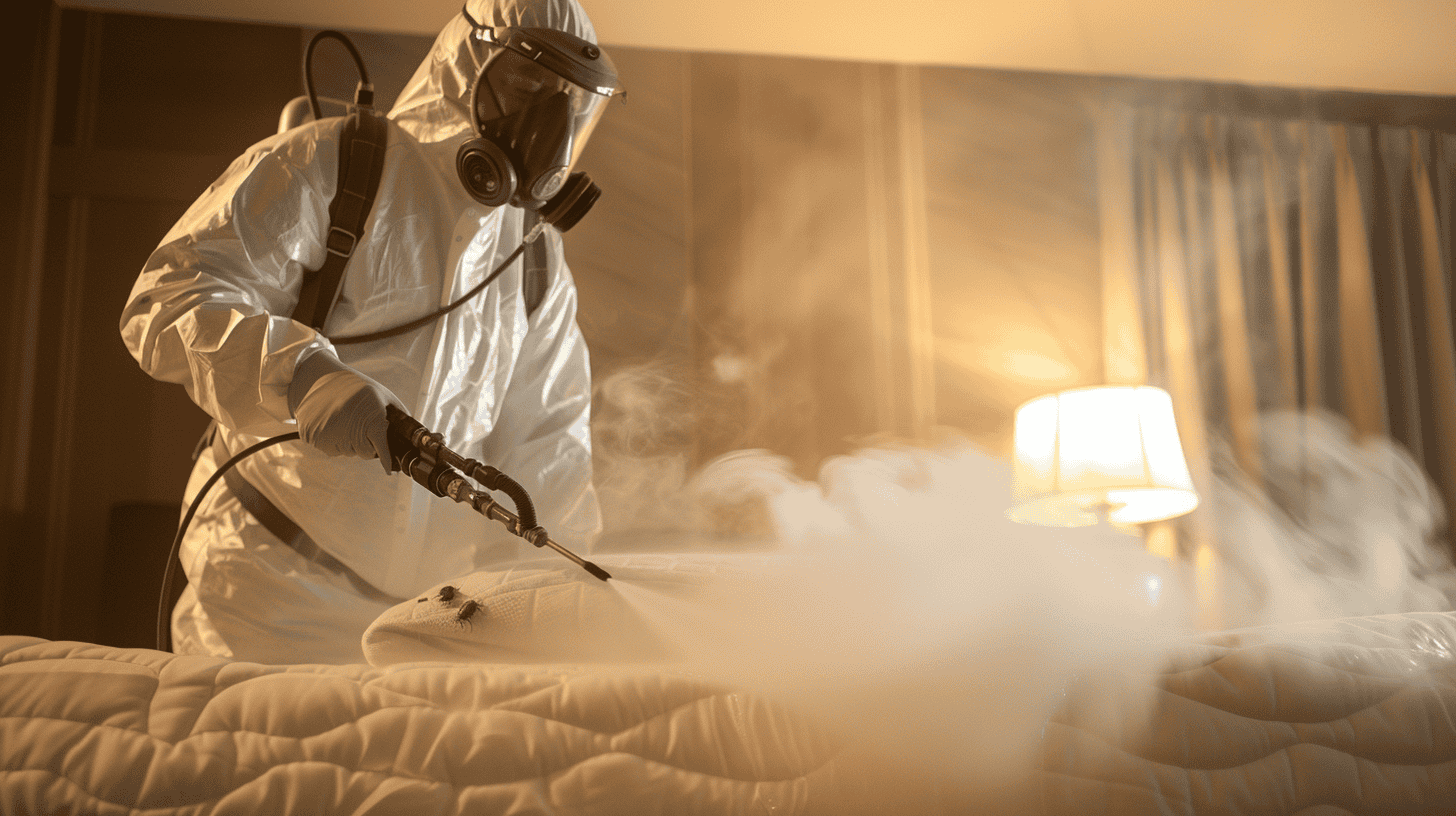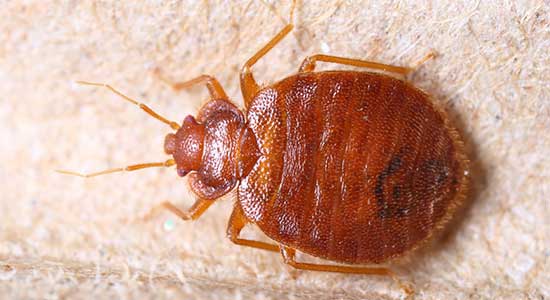Affordable Bed Bug Heat Treatment for Quick and Effective Results
Affordable Bed Bug Heat Treatment for Quick and Effective Results
Blog Article
Get Informed About the Kinds Of Parasite Control Approaches and Their Benefits for House Owners
Understanding the various insect control methods readily available to homeowners is essential for reliable bug administration. Homeowners who are educated can make strategic options that not only address bug issues yet also enhance the overall quality of their living setting.
Chemical Parasite Control Methods
Chemical bug control techniques are an essential element of integrated insect monitoring approaches for home owners seeking effective remedies to pest problems. These techniques involve the application of chemical compounds made to remove or hinder parasites that endanger personal residential or commercial property, wellness, and convenience. Common chemicals made use of include pesticides, fungicides, herbicides, and rodenticides, each tailored to target details insects.
The key benefit of chemical pest control is its rapid effectiveness; several formulas offer instant results, minimizing pest populations dramatically in a short time. Furthermore, advances in chemical formulations have actually caused items that are much more environmentally pleasant and have lower poisoning levels for non-target microorganisms when applied correctly.

Organic Bug Control Strategies
All-natural insect control techniques have actually gained prestige as house owners look for much safer and a lot more lasting options to typical chemical methods. Organic pest control strategies make use of all-natural predators, bloodsuckers, or pathogens to handle bug populations properly. This method is not only environmentally pleasant but likewise minimizes the danger of damage to non-target species, consisting of helpful bugs and wildlife.
One of the most common organic control approaches includes introducing natural predators into the environment. Ladybugs can be utilized to manage aphid populations, while nematodes target soil-dwelling bugs like grubs. In addition, parasitoids-- microorganisms that survive on or within a host-- can be used to control specific insect types by laying eggs inside them, ultimately causing their demise.
An additional method is the usage of biopesticides, which are originated from all-natural materials such as minerals, plants, or microorganisms (bed bug exterminator). These items can effectively target insects while posing minimal risk to family pets and humans. Overall, organic parasite control strategies supply homeowners with an effective methods of insect management that straightens with ecological principles, advertising a healthier living atmosphere while decreasing reliance on synthetic chemicals
Mechanical Pest Control Strategies
Mechanical insect control techniques encompass a variety of approaches that literally avoid or get rid of bugs without making use of chemicals. These strategies are specifically valuable for home owners looking for eco-friendly choices while making sure the security of their home.
One usual method is the usage of obstacles, such as screens, nets, and catches, which prevent insects from entering homes or specific locations. As an example, mounting home window screens can successfully maintain pests out, while utilizing physical obstacles around yards can prevent larger bugs like bunnies or exterminator near me deer. In addition, mechanical catches designed for rats can catch and get rid of these insects without the requirement for harmful substances.
An additional effective approach includes using vacuum cleaners and mops to remove insects directly from surfaces. Normal cleaning and upkeep can substantially lower parasite populations by getting rid of food resources and hiding places. Additionally, using devices like ultrasonic pest repellents can discourage numerous pests through noise waves that are unpleasant to them yet inaudible to human beings.
Cultural Parasite Control Practices
Cultural parasite control techniques concentrate on modifying the atmosphere and monitoring techniques to develop conditions that are much less conducive to pest invasions. These techniques are essential in keeping a balanced community and reducing the dependence on chemical treatments. By altering agricultural techniques, house owners can successfully hinder bugs while promoting plant health.
One common technique consists of plant rotation, which disrupts the life cycles of insects by changing the sorts of plants expanded in a particular location (bed bug exterminator). This not just minimizes pest populaces however also boosts dirt wellness. In addition, intercropping-- planting diverse crops in closeness-- can puzzle insects and reduce their capability to locate their favored host plants
Water management is one more vital facet of cultural practices. Appropriate irrigation strategies can avoid standing water, which acts as a breeding ground for insects and various other parasites. Furthermore, maintaining sanitation around the home, such as on a regular basis eliminating particles and food waste, can substantially reduce bug tourist attraction.
Integrating these social techniques right into a comprehensive pest monitoring strategy enables house owners to develop an environment that naturally prevents parasites, consequently boosting the performance of other control approaches while promoting lasting gardening and landscaping.

Integrated Parasite Management Approaches
Integrated Bug Administration (IPM) stands for an alternative approach that integrates different techniques to successfully handle insect populations while minimizing environmental influence. This approach incorporates organic, social, physical, and chemical techniques to attain lasting bug control. By examining pest populaces and their all-natural opponents, IPM highlights surveillance and determining bugs before executing control procedures.
Among the core principles of IPM is making use of thresholds, which develop the degree of pest activity that warrants intervention. This guarantees that therapies are used just when essential, minimizing the dependence on chemical pesticides. Organic control techniques, such as presenting natural predators or parasites, work in combination with social techniques like plant turning and environment adjustment to disrupt pest life cycles.
Additionally, IPM motivates the use of least-toxic chemical alternatives when treatment is essential, focusing on products that pose very little risk to non-target organisms and the environment. For property owners, embracing IPM approaches not just boosts the efficiency of bug monitoring however additionally advertises a much healthier living setting, fostering biodiversity and minimizing chemical direct exposure. Ultimately, IPM encourages property owners to make informed choices that stabilize pest control with environmental obligation.
Final Thought
In conclusion, understanding the various bug control approaches encourages home owners to make educated decisions pertaining to pest monitoring. Each approach-- chemical, biological, mechanical, cultural, and incorporated pest management-- supplies distinct benefits that cater to different demands and choices. By choosing appropriate strategies, home owners can properly take care of insect populations while decreasing health dangers and ecological impacts. This informed technique contributes to a much healthier living setting, advertising general health for pet dogs and households alike.
Comprehending the different bug control techniques offered to homeowners is vital for efficient bug monitoring.Chemical parasite control methods are a crucial component of incorporated parasite monitoring approaches for homeowners looking for reliable services to pest infestations. In general, organic bug control strategies provide property owners with an efficient methods of parasite administration that straightens with ecological concepts, advertising a much healthier living setting while decreasing reliance on artificial chemicals.
Cultural bug control practices focus on customizing the setting and monitoring techniques to create conditions that are less helpful to pest infestations.In final thought, understanding the different pest control approaches equips house owners to make enlightened choices concerning pest monitoring.
Report this page